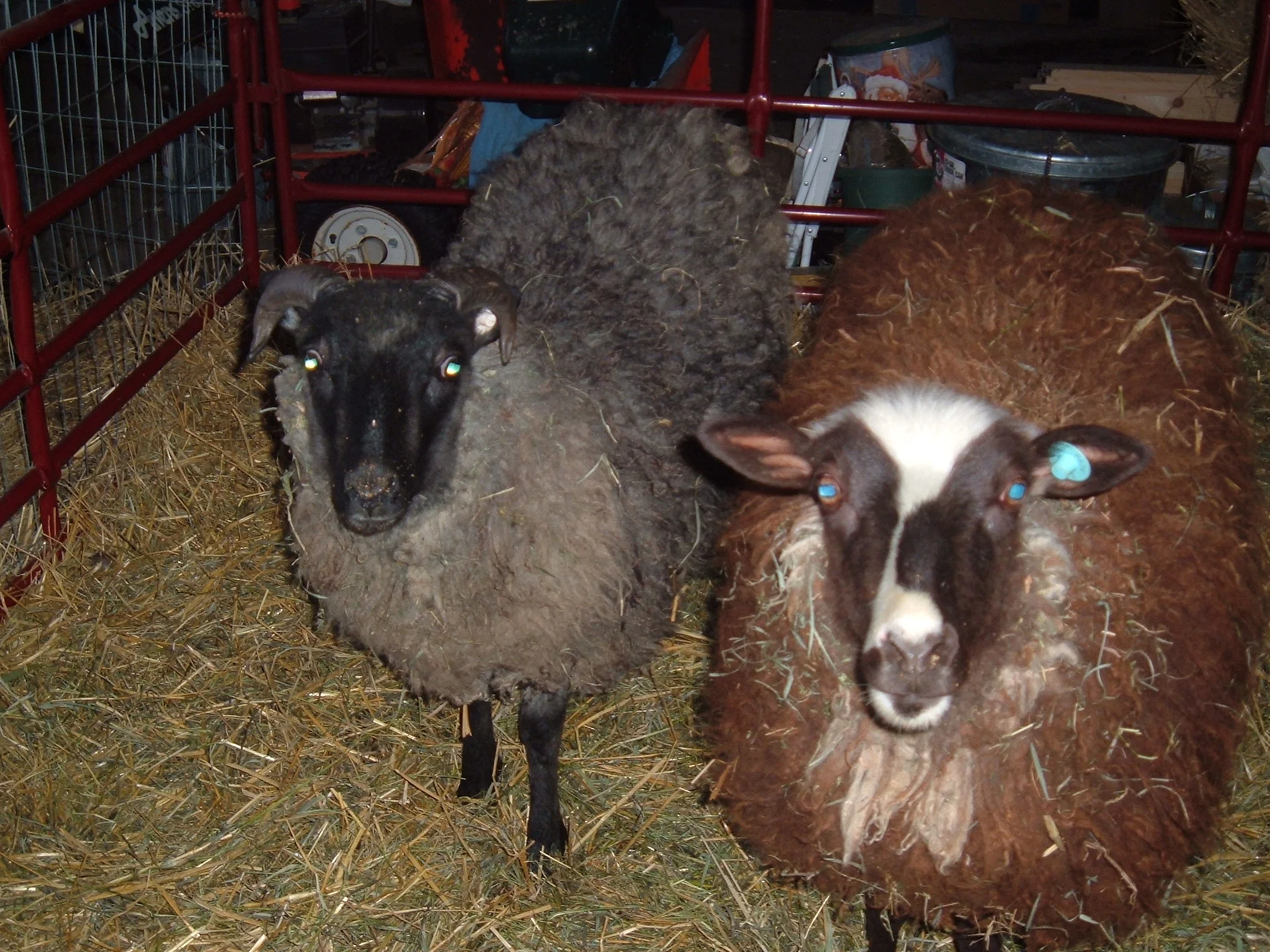The Shetland Breed
About Shetland sheep
Shetland sheep, the smallest of the British breeds, were brought to the Shetland Islands over 1000 years ago by Viking settlers. Even today, they retain many of the primitive characteristics. They are small and docile sheep, with ewes ranging from 75 to 100 pounds, and rams from 90 to 125. Typically, rams are horned and ewes polled, although polled rams and horned ewes are also known. Following the importation of Shetlands into Canada and then the United States in the 1980’s, the status of the breed has moved from “endangered” to “recovering.”
Shetlands probably have the widest color variation of any breed, with 11 colors (white, black, shades of gray, shades of brown) and 30 named patterns or makings (most retaining the historic names). In addition, fleeces range from the long, wavy “primitive” type, to the shorter “English” type that is highly crimped. The high quality wool is among the finest of any sheep, and can be spun to a very fine diameter. Shetland wool is highly prized by hand-spinners. At Trinity Farm, we strive to maintain variety in both fleece color and type in these wonderful sheep.
Since all of the sheep are halter-trained, they are easy to manage during routine health procedures and when they need to be moved from one location to another. We maintain a flock of ewes, rams, and wethers. Please enjoy the pictures of some of our sheep, and check back frequently to see what we have for sale.
Shetland registration
Our NASSA flock number is 1873, and flock prefix is Bellwether.









